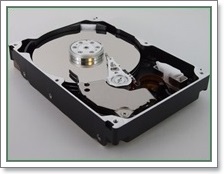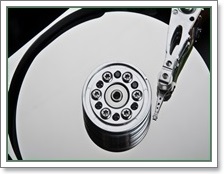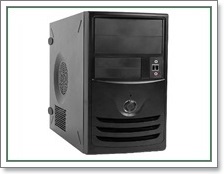Gold
Gold is the 2nd best conductor of electricity. It is found in numerous places on a motherboard: IDE connectors, PCI Express slot, PCI, AGP, ISA, and other ports, jumper pins, the processor socket, and DIMM (SIMM on older motherboards) slots. All of these connectors are often covered with a fine layer of gold a few microns thick, deposited by flashing or plating. Gold is popular in connectors due to its conductive properties. Of course, the amounts used in each part are infinitesimal. But with the price of gold skyrocketing in recent years, it is becoming more and more economically-viable to recover gold from old electronic and computer components than to mine it. That's why specialized companies have sprung up to do just that.





Copper
CRTs, or cathode ray tubes, are commonly used in TV or Computer Monitors. All CRTs are made of leaded glass often thrown in the garbage. But, if you cut down the wires , you will find copper wires. Copper wiring has been used for information transmission for most of the last century, not for computers, but primarily for telephone lines that were strung all over the United States, many of which are still in use today.



Aluminium
Aluminium is mostly found in Heat Sink on motherboards due to its thermal conductivity. Hard Disk platters are also made of Aluminium alloy.



Platinum
Platinum is among the precious metals used in the manufacturing of computer components. Hard drives, which function like old record players, are coated with a cobalt-based alloy which stores data. Platinum layers enhances the magnetism of the cobalt alloy, which allows for more data to be stored on the drive and improves the time it takes to access the data.



Steel
Steel is preferred to build case rather than Aluminium since Steel is harder and cheaper. Steel is also used in most of the hard drives (in head actuators) with magnets (Neodymium magnet; a type of rare-earth magnet).




Silver
Even though the keyboard is mostly just plastic with some steel, there is one valuable precious metal contained with in it; Silver! The silver is contained on two mylar sheets contained under the keys and it is very easy to recover. When you unscrew the keyboard, you will actually find 3 sheets, the top sheet, the middle sheet and the bottom sheet, the top and bottom sheets are the mylar sheets which contain the silver contacts. Silver is also found in most parts of the Hard Disks.




Zinc
Zinc sulfide, a zinc compound, is used in electronic devices as a phosphor. Phosphor gives off light when struck by electrons. Zinc sulfide has been used inside the computer and television screens to produce images . The phenomenon is shown as :-



Iron
In a typical computer system found in a home or office, you normally see the "bumps" on the mouse, keyboard and monitor cables. You can also find them on power supply wires when a device (like a printer or scanner) uses an external transformer. These "bumps" are called ferrite beads or sometimes ferrite chokes. These bumps are used to reduce EMI (electromagnetic interference) and RFI (radio-frequency interference).
A ferrite bead is simply a hollow bead or cylinder made of ferrite, which is a semi-magnetic substance made from iron oxide (rust) alloyed with other metals.



Lead
A typical computer monitor may contain more than 6% lead by weight, much of which is in the lead glass of the cathode ray tube (CRT). It is mixed into the glass for two reasons: Firstly, it improves the optical quality of the glass. Optical quality is especially important at the front of the CRT. Secondly, it acts as a shield against radiation generated by the electron gun and electron beam.Circuit boards also contain considerable quantities of lead-tin solders.




Mercury
Certain flat screen laptop displays use mercury-containing back-lit bulbs for illumination; however, the mercury contained in these flat screen displays is in very small amounts.



I put my best efforts to cover all the basics. Nevertheless, you can find more metals and minerals in the electronics.
I hope you find this information useful and interesting.



































Web Counter
